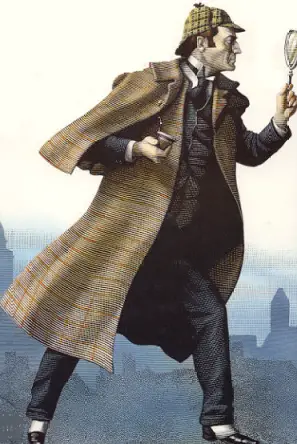Greetings, scholars!
 | ||
| Vermeer's The Music Lesson (Vermeer had 11 children, which might explain his preference for calm interiors.) |
Many of you have a metronome at home to help you practice your music pieces at an even tempo. The metronome was invented by Ludwig van Beethoven's friend, Johann Maelzel. Can you believe that, even in Beethoven's time - Classical Period (1780 to 1820) - students didn't always enjoy practicing with a metronome and often made fun of it? Some people hold the opinion that Beethoven was making fun of this newfangled invention in the 2nd movement of his Symphony #8. Listen here. As you listen, can you put on your detective cap* and find the 64th notes?
 |
| Sherlock Holmes and his Deerslayer |
Our syllables for counting out 64th notes are the same as the name for a 64th note in the United Kingdom: hemidemisemiquaver! Speak the syllables when you hear them as you listen to the performance. Also, test your knowledge of the musical instruments in the orchestra as they are highlighted in the above video.
Next week, we will study and copy whole, half, quarter, eighth, sixteenth, thirty-second and, wait for it...sixty-fourth notes in our staff paper notebooks. Extra credit for remembering the proper name for a detective cap!
♫
We will sing through our repertoire and read further as we continue our composition based on One Morning in Maine by Robert McCloskey. We have motifs for Sal, Jane, and Mother; bring in ideas for Penny, the nameless cat, the loon, the fish hawk, the seal, and Father. Slipping on seaweed could have its own theme, as could sentences such as, "My, such trouble!"
♫
We will listen to Opus 6, also known as the Christmas Concerto, by the Baroque Period (1600 - 1750) composer, Arcangelo Corelli.
Be an angel and listen to a sample, as you look at the Renaissance Period (1400 - 1600) art of Michelangelo, Botticelli, Leonardo, and Raphael, here.

